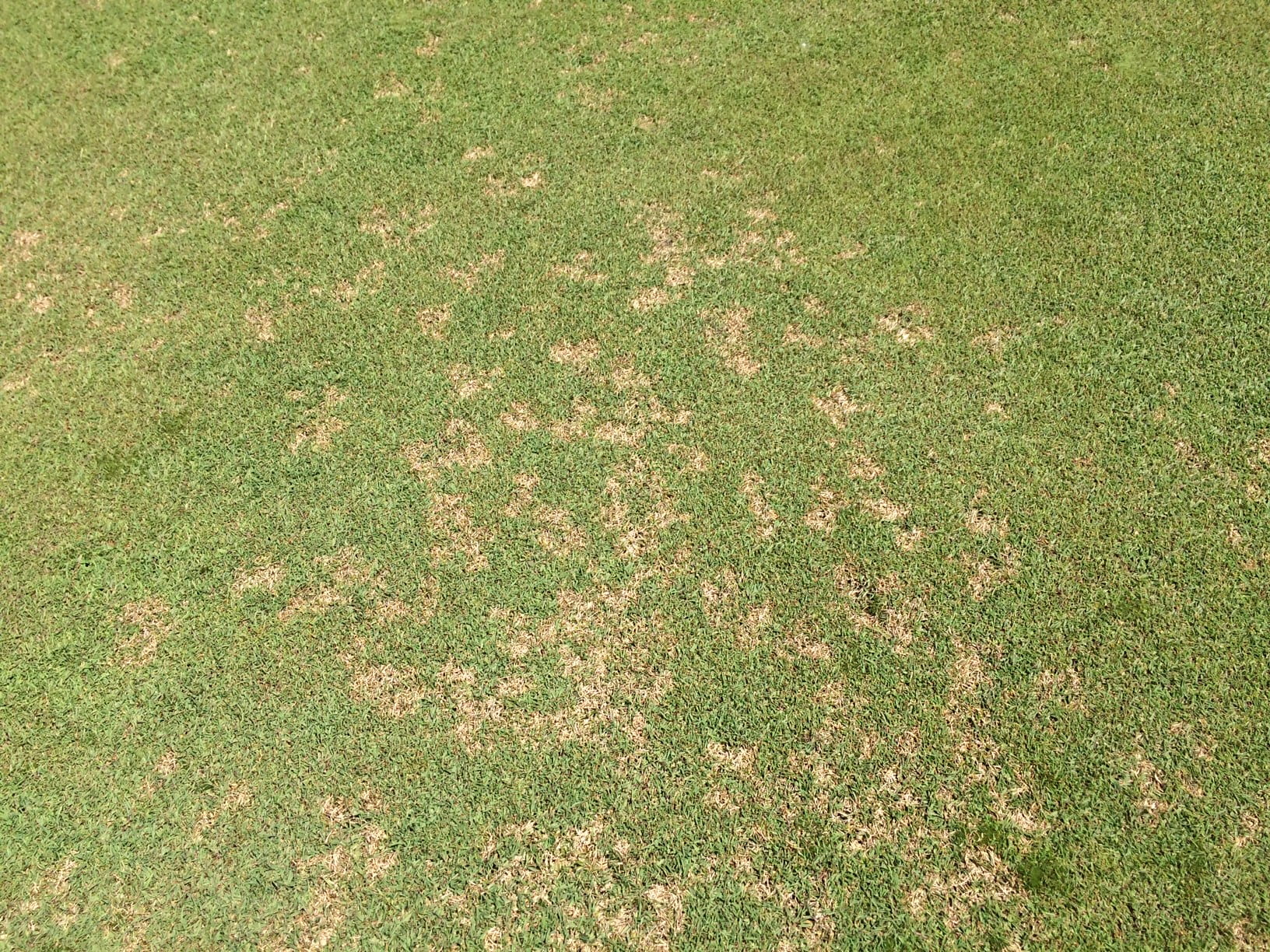(Megan Kennelly, KSU Plant Pathology)
As we move through spring and launch towards summer, don’t forget some key disease resources.
Fungicide info is available here:
https://entomology.ca.uky.edu/files/catmanualpdfs/ppa1.pdf
and here in a searchable online database:
https://turfpests.wisc.edu/filter.aspx?id=8-fungi
Large patch in zoysiagrass
Large patch has definitely been active lately with the cool, wet weather.
This is an area that was previously inoculated for a study, so it’s a high-pressure location:
In the photo below, the clear area was treated with a fungicide (tebuconazole) in early September and again in early October:
Some light N may help the turf recover. Some prior KSU work with U of Missouri (click here for info) and additional follow-up work by U of Missouri demonstrated that light N (think 0.25-0.5 lb/1000) in spring will not enhance this disease.
Dollar spot
The photo above is a worst-case scenario of the heaviest disease anywhere at Rocky Ford. It is an untreated area of a Cato-Crenshaw stand, which is highly susceptible. Untreated areas of less-susceptible cultivars are looking clean for now. KSU is part of a recently-published study that looked at disease susceptibility of various cultivars across several states. You can find a short preview/summary here.
What are you seeing? Let us know.
Root rot
We have not received samples here of Pythium root rot, but there are reports from nearby. You can read about findings of Pythium root rot in Missouri from our colleague Dr. Miller here:



